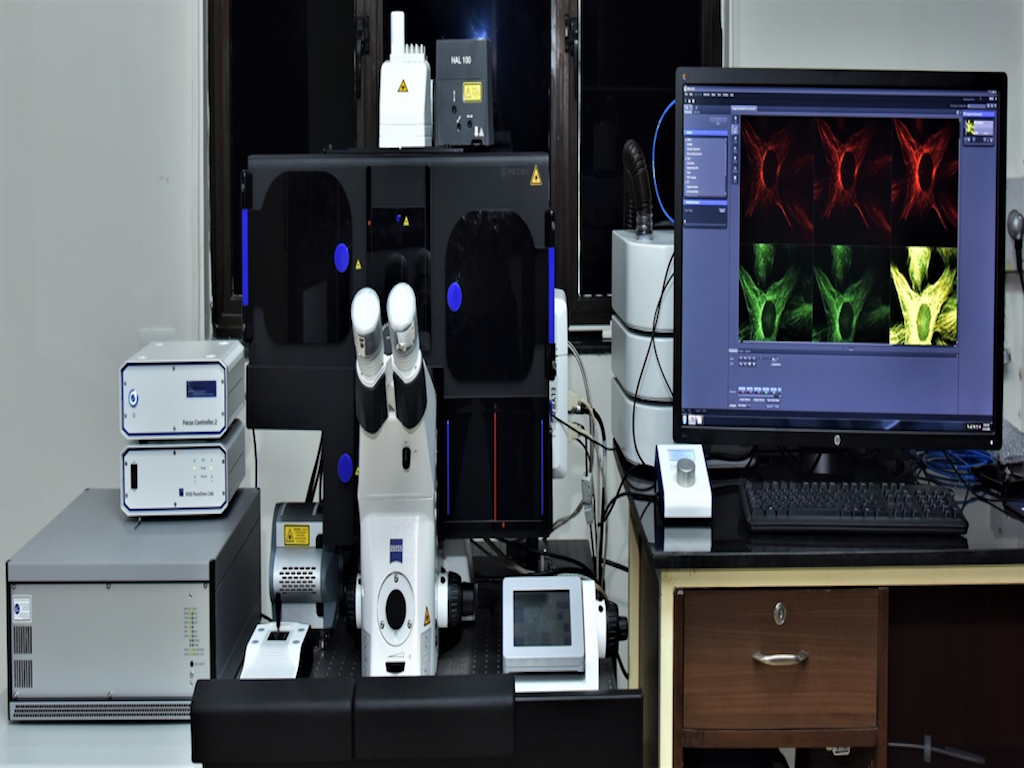Loading...
Super Resolution Microscope's Details

Equipment Name :
Super Resolution Microscope
Make :
CARL ZEISS
Model :
Elyra PS1
Status :
 Functional
Functional
Purchase Date :
26/12/2017
Warranty/AMS :
WARRANTY CAMC
Unit of Use :
Per 2 Hour
Consumables/Services Provided :
No
Prior discussions or payment required? :
Yes
Technical Help Provided :
ASSIST
Minimum Booking per unit of Use :
-
Maximum Booking per unit of Use :
-
Contact Person :
Prof. Deepak T. Nair
Email :
Phone No. :
-
Technical Personnel :
DAMINI
Email :
Phone No. :
0129-2848619
Location :
ATPC Optical Microscopy Facility
WORKING HOURS
Structured illumination microscope is a widefield technique in which a grid pattern is generated through interference of diffraction orders and superimposed on the specimen while capturing images. The grid pattern is shifted or rotated in steps between the capture of each image set. Following processing with a specialized algorithm, high-frequency information can be extracted from the raw data to produce a reconstructed image having a lateral resolution approximately twice that of diffraction-limited instruments and an axial resolution upto 120 nanometers.
About Microscope: The Microscope is framed in an inverted fluorescence research microscope (Axio observer 7) with motorized stage. There are other super resolution modules available with the system which are as follows:
Total Internal Reflection Fluorescence Microscopy (TIRF)
Photo Activation Localization Microscopy (PALM with 3D)
Stochastic Optical Reconstruction Imaging (STORM)
It has a metal halide illuminator HXP120 for sample observation and 4 diode lasers to make imaging comprehensive. The lasers are:
405 nm Laser 50 mW
488 nm laser 100 mW
561 nm laser 100 mW
640 nm laser 150 mW
It is equipped with varied range of microscope objectives:
20X Plan-Apochromat (NA 0.80)
63X C- Apochromat Water immersion (NA 1.2)
63X Plan-Apochromat Oil immersion (NA 1.40)
100X alpha Plan-Apochromat Oil immersion (TIRF Objective) (NA 1.46)
The system uses two different cameras for imaging:
Andor EM CCD camera iXon DU897 (For TIRF, PALM and STORM imaging)
Camera pco.edge sCMOS Version 4.2 (for SIM imaging)
Applications: System is used to find super resolved images (resolution up to 120 nm) of cells and their network filaments/fibers, organelles.




